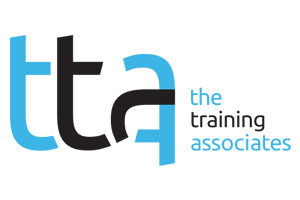Today’s workplace is facing increasing complexities, making leadership both more important and more challenging than ever before. To stay competitive in a volatile market, companies need to develop effective leaders across organizational levels. They also need leaders who can not only navigate uncertainty but also use it as fuel for growth and innovation.
In this episode of The Business of Learning, brought to you by Canvas, we spoke with Dr. Susan Gray, chief creative officer at Canvas, and Bruce Landry, managing partner and chief experience officer at Canvas.
Listen now to hear their insights on:
- The current challenges leaders are facing.
- Why we need to challenge conventional notions of leadership as a role or rank.
- The “leadership as responsibility” approach.
More Resources:
- Article: The Disengaged Workforce: It’s Time to Rethink Leadership Development
- Course: Leading Leadership Development Certificate
- Article: Leading With Agility
- Wiki: Training Industry’s Leadership Development Model
Download the brochure below to learn how Training Industry’s Leading Leadership Development Certificate can help you develop future-ready leaders in your organization:
The transcript for this episode follows:
Sarah Gallo: Hi! Welcome back to the Business of Learning. I’m Sarah Gallo, senior editor here at Training Industry.
Michelle Eggleston Schwartz: And I’m Michelle Eggleton Schwartz, editor in chief. This episode of the Business of Learning is brought to you by Canvas Leadership. Here’s a brief message from our sponsor.
[Ad]
Imagine a workplace where every individual thrives, and organizational goals are achieved. At Canvas, we make this vision a reality by bridging the gap between human growth and organizational needs to ignite transformational change. Our mission is to disrupt, shift perspectives and transform leadership behaviors through transformative learning using our meaning, motivation and momentum model. We help organizations align culture with goals, sparking growth at every level. Trusted by global industry leaders in financial services, biopharma, manufacturing and more, Canvas delivers scalable people development solutions tailored to your organization’s needs, whether you’re a senior leader driving culture transformation or an HR team scaling leadership programs that make a measurable impact, Canvas is more than a partner. We are a trusted connected community of experts dedicated to unlocking your organization’s potential. Don’t wait to create a thriving workplace. Discover how Canvas can transform your organization today. Visit canvasleadership.com.
Sarah Gallo: Leadership is changing in ways we haven’t seen before. These challenges. The expectations and even the definition of what it means to lead are all shifting to help us navigate this pivotal moment. We’re speaking with two experts today from Canvas Leadership. With us, we have Dr. Susan Gray. Dr. Gray is a professor of leadership with over 30 years of experience as a practitioner in leadership development. She’s also the chief creative officer at cCanvas, where she works closely with our second guest today, Bruce Landry, who leads the client experience at Canvas. With that, Dr. Gray and Bruce, welcome to the podcast.
Dr. Susan Gray: Thank you very much. It’s wonderful to be here.
Bruce Landry: Thank you.
Michelle Eggleston Schwartz: Yes, welcome. We’re super excited about this conversation today. And, Dr. Gray, I know that you’ve spent decades studying and shaping leadership at the highest levels. From your perspective, what’s driving this shift in leadership? Why does it feel like we’re such at such a pivotal moment right now?
Dr. Susan Gray: Well, that’s a really good question. And I’m going to be cheeky when I say this. Maybe it’s because we are standing at a real turning point in society, but specifically in our corporate world. You know, we’re living in a world today where trust in institutions and authority has plummeted and to historic lows. If you think about leadership as a title without accountability or transparency, it kind of means very little. And so we have low trust. We have increased complexity. People are tired, and leadership is in need of, I would say, a drastic makeover. And you think about the old school command and control style of leadership. It doesn’t work anymore, right? It’s not enough to just steer the ship. You also have to have a crew that’s ready to adapt and innovate together. If we’re going to survive and thrive in an uncertain and ambiguous world.
Bruce Landry: I totally agree, Susan. Leaders today are having to decide if they’re going to cling to that old way, hoping that stability will somehow return. Or if they’re going to embrace a new way of leading that focuses on turning uncertainty into opportunity, I think leaders who embrace this shift will do more than just survive. They’ll be the ones that shape the future.
Sarah Gallo: This new era of leadership really holds so much potential for unlocking growth and transformation. But it does also come with a lot of pressure. Leaders are being asked to empower others, drive innovation and find opportunity in uncertainty. And all of this while also juggling a lot of new demands in their roles. What are you both seeing as some of the most pressing challenges leaders are facing today? And how are these challenges really impacting organizations.
Dr. Susan Gray: I can start this one, Sarah, you know I agree with you. Leaders are in a pressure cooker right now, and they’re dealing with a workforce that’s asking for a lot
more than they ever have. Folks are demanding equity and transparency. They want purposeful, meaningful work and personal support. Right? And all of this while they’re trying to keep up with everything that’s changing around them. And so I said it before, the old leadership playbook isn’t available anymore. And the new one hasn’t quite been tested out yet. So it’s almost like leaders are flying the plane while they’re building it. So some of the biggest challenges that we hear anyway, especially from mid-level or senior leaders, is that this juggling is exhausting, and they don’t have the systems they need to navigate or manage what we could call competing complexities, that they’re facing right? So leaders are required to adapt. They’re required to be ready to pivot to whatever is coming next, but they don’t even know what’s coming next, and I think another piece that complicates it for them is that if they pause too long, if they, if they try to wait it out, or if they wait for things to stabilize, if they try to, used to say in years gone by, manage the change, I would say that they’re in a way steering their organization towards irrelevance. Bruce, you are often with our clients. What are you seeing.
Bruce Landry: Yeah, let me share a real example. So we’re working with a global biotech company and a big challenge for them is to scale the business into areas that have been dominated by other competitors while trying to maintain a cutting edge. Revolutionary mindset to patient care? Right? So they’re having to explore. How do you thrive in the midst of the storm, which is very different than trying to find the calm in the storm? They’re talking about developing leaders who thrive in these conditions. And as it’s a big challenge, right? Because in many organizations people don’t thrive in those conditions. Organizations today are needing to develop leaders who are fundamentally excited about disruption. They need leaders who see change as fuel for innovation. They have to rethink how to cultivate adaptability as a core strength and a change readiness mindset. And for many organizations, Sue, it’s really difficult.
Michelle Eggleston: Definitely. Thank you both for sharing, because this idea of harnessing change instead of just managing it. That’s a really big shift. So how does training and development need to evolve to address these challenges and really prepare leaders for the future.
Dr. Susan Gray: Michelle, as an adult educator, this is a hot topic for me, and I feel strongly that leaders today do not need more tools or frameworks. I think they need a new way of thinking, and in particular, thinking about what it means to grow, or how to accelerate their capacity to grow. I think the challenges that leaders are facing are demanding something much deeper in a much more personal way than what traditional leadership programs that were designed years ago can really offer them. If I think across the decades, the history of leadership development, we focused a lot on teaching leaders what to do. We focused a lot on their action. Right? Everybody all moved towards action, planning, and we live in a performative or results driven kind of world. But the truth is all of our behavior, every behavior, every action, every decision we make comes from how and what we think. So mindset drives behavior and teaching leaders to think about how they process complexity, or what’s their relationship with uncertainty, or what gets triggered for them. If they get something wrong, right, if they try something and fail. That kind of focus is expanding that leader’s awareness of the mindset they’re operating within and the value of aligning that mindset with their intended outcomes. So I’m probably going to be unpopular with our listeners, because I think everybody’s talking now about upskilling, and I think we need to move away from topical skill, development, or at least so much of a focus on it, and instead embrace immersive and transformative learning experiences that are really about fostering deep self-awareness and giving leaders opportunities to practice, disrupting their previous ways of thinking and being. And I think delivering results is always going to be important. And if we can redefine leadership as responsibility for cultivating this change. Ready mindset that Bruce mentioned. Then we’re proactively helping them to seek out change in order to thrive in an uncertain and continuously ambiguous landscape. And now we’re talking about a new kind of strategic advantage.
Sarah Gallo: This idea of leadership as responsibility feels like a big reframe. Can you share a little bit more about this concept, and why you think it’s so critical in today’s business climate.
Bruce Landry: Yeah, I can take that one, Sarah. You know, we’ve spent a lot of years working in the field of leadership development. And what we’ve learned, which will be no shock to our listeners is that people don’t like change. As a leader I can wrap my head around the role of leading others through change. But it’s much harder to wrap my head around me. Having to change myself. Right? Leadership is responsibility demands courage to confront your own limitations, courage to push up against the edges of your comfort zone. It’s about evolving yourself before you ask anyone else to do the same, and it’s about being radically accountable for how you lead, not just what you deliver. This isn’t leadership as we’ve known it. This is a call to redefine what it means to lead in a world where stability really is an illusion. Can you turn disruption into your greatest strength, and can you empower your people to thrive in the face of uncertainty?
Michelle Eggleston: Those are such good points. How do you suggest organizations embrace leadership as a responsibility? What does that look like?
Dr. Susan Gray: That’s a great question. I think leadership as responsibility requires a deliberate focus on mindset, and it also requires the courage for organizations to lean into having new kinds of conversations about what leadership means here. Now in this organization, in this particular landscape, and then how leadership will be held accountable within the organization. Right? So we’re talking about leaders approaching their work and their influence, and how they are aligning, meaning making with purpose. I think there’s also a focus that organizations can take on cultivating a mindset that sees growth and change almost as inseparable, and then how they are applying that mindset to cultivate cultures that are built for long-term adaptability. So how they inspire others to see this adaptability as a shared strength versus a singular burden is going to become really critical. Bruce, what do you think?
Bruce Landry: Here’s what we’re seeing, Susan. It’s about investing in transformative learning experience that really challenge leaders to examine themselves, not just their organization. Leaders must be given the space, I think, to pause and reflect critically on assumptions, on mental models that drive their decisions and really to create new stories that challenge some of these legacy stories that they’ve been operating under often unconsciously.
Dr. Susan Gray: I totally agree with what you’re saying, Bruce, because that is the work of transformative learning right? Sitting in that discomfort and disrupting all narratives. As you said, imagining bold new possibilities. We’re talking about a process of deliberate reflection and planning and activation, and then refining that over and cycling through that right? So I think it’s not about reactive leadership. It’s really about becoming intentional and organizations embracing adaptability and being grounded in purpose.
Michelle Eggleston: Love that. To help make this a little more practical for our listeners, what’s one step that learning leaders listening today can take to embrace this idea of leadership as responsibility?Bruce Landry: Yeah, Michelle, that’s a great question. I mean, we’ve said it a number of times already. It’s about committing to transformative learning. You know, you start by asking yourself the tough questions, what beliefs am I holding on to? That might be limiting my growth? What patterns of my leadership do I need to disrupt. How can I model adaptability and reflection with my team? It’s about stepping into a new mindset where change really isn’t something to react to. It’s something to shape.
Dr. Susan Gray: Yeah, Bruce, when I hear you say that, let’s be honest. This kind of self-reflection is uncomfortable. It’s hard, it’s challenging, but it’s also where the most growth happens. And so when we talk about leadership as responsibility, we’re talking about requiring leaders to see for themselves their choices, their behaviors, and even understanding their missteps, or you know, when they try something, and they’re not successful to see that as an opportunity to recalibrate and to recalibrate quickly.
So when leaders embrace this kind of a mindset, it creates a ripple effect. Right? They’re no longer just managing change. They’re transforming it into a catalyst for growth.
Bruce Landry: And that’s the real power. Right, Susan? I mean, it’s the power of leadership is responsibility. It’s about being accountable, not just for the outcomes that people expect, but for fostering the right conditions where adaptability and progress thrive. When this becomes the norm, the entire organization really benefits.
Dr. Susan Gray: Yeah.
Sarah Gallo: I love this idea of really using change as fuel for growth and leadership, as responsibility really does sound like a game changer for individuals and their organizations. But how do we really know if it’s working? How can organizations really measure the success of embracing leadership as responsibility.
Bruce Landry: Yeah, that’s the question. Everybody wants to know right organizations. We get asked that all the time. You know, measuring success in this context, Sarah. It isn’t about checking boxes or hitting short-term targets. It’s about tracking the deeper shifts that drive long-term growth. When organizations embrace leadership as a responsibility you start to see signs of cultural shift teams that are more effective, adaptive, and willing to take thoughtful risks. That’s where you really want to be looking is, how does it shift the culture overall.
Dr. Susan Gray: I want to also share Bruce. You start to see changes in the way leaders themselves show up. Are they being more reflective? Are they being more intentional? Are they more connected to their teams? Are they fostering environments where collaboration feels natural? Are people feeling more empowered to contribute at every level. So you can measure this, of course, through employee engagement and retention and even business outcomes. But it’s also about the intangible energy of an organization. Right? So do people feel like they’re part of something bigger, and are they ready to embrace, change as a driver of progress rather than seeing it as a disruption. And so I think ultimately success is measured by whether your organization is thriving in the uncertainty whether it’s positioned to lead in this environment, not just react. And maybe one more. I think it’s also important to say that leadership has responsibility. We’re not talking about perfection. We’re talking about progress. And when organizations can align that meaning with their mindset. With the intended action, then progress becomes in a way unstoppable.
Sarah Gallo: Well on that note, Dr. Gray and Bruce, thank you both so much for speaking with us today on the podcast. It’s been such a fascinating conversation, and I do suspect our listeners may want to dive a little bit deeper. Where can they go to learn more about your approach, or to connect with canvas, and how can they reach both of you?
Bruce Landry: Yeah, thanks, Sarah. Listeners can visit our website at canvasleadership.com or connect with us on LinkedIn. We’d be happy to talk more about this. It’s our passion.
Dr. Susan Gray: Thank you for the opportunity. It’s been really enjoyable. Just having this discussion with you. Thank you.
Bruce Landry: Thank you very much.
Michelle Eggleston: For more resources on leadership, training and development visit the shownotes on our website at TrainingIndustry.com/podcast. Lastly, don’t forget to rate and review us wherever you tune in to the business of learning until next time.







